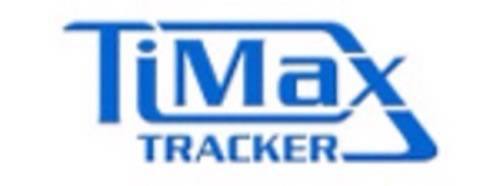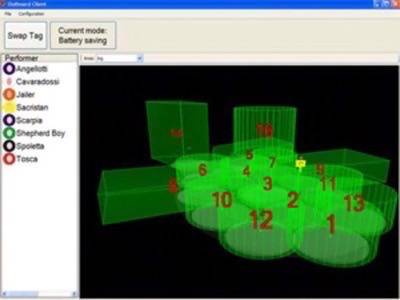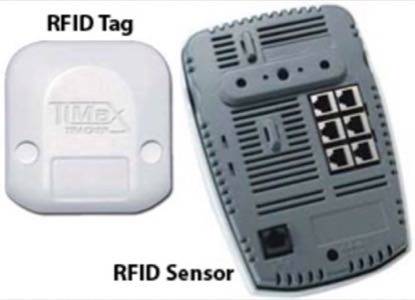As a technology journalist and musician, I am fascinated by the tech at the intersection of these two fields. During a recent trip to Boston, I was interested to learn that Symphony Hall had been scientifically and mathematically designed to provide outstanding acoustics during performances. Other venues, like arenas, can’t take advantage of this acoustical precision because they need to accomodate other events, but thanks to some new technology that leverages RFID, any venue can greatly enhance the quality of sound delivered to its audience.

Featured in an article today by RFID Journal’s Claire Swedberg, Out Board, a British sound engineering firm, has developed technology that optimizes sound output based on the real-time location of performers on a stage.
To get a better idea of what this technology is accomplishing, think about the sound experience you have when seeing a movie in a theater. Not only do speakers around the theater provide surround sound effects, but speakers behind the screen can pinpoint sounds into the visual world of the movie. When a character is on the left side of the screen, their voice may seem to be coming from that side of the screen.

During live performances, like plays, operas and musicals, sound output as heretofore been largely hindered by whatever speaker system happens to be in place at the venue. In most cases, especially with large venues, sound just comes out of all speakers at the same time and level. With Out Board’s technology, speaker systems can be optimized to produce sound that more accurately represents the performers location on stage – much like what we experience in movie theaters.
The system, called TiMax Tracker, works using small unique RFID tags carried by the performers on their wireless microphone packs. RFID readers mounted throughout the venue can determine the angle and distance from a specific tag and map individual performers to a virtual grid of spaces on the stage.
“The system predicts the arrival time of sound and thereby, says, Dave Haydon, Out Board’s director, matches the sound location with the visual location of the performers on the stage using a psychoacoustic phenomenon known as precedence,” writes Swedberg.

The precedence effect (or “law of first wave front”) is our brain’s ability to determine the location of sounds amidst conflicting signals based on the direction of the first waves of sound. This is why we are still able to localize sounds in an echoey room where reflecting sound waves come from different directions. It is using this law of our brains that TiMax Tracker can better localize sounds for live performances, making the experience feel more real, and making amplification seem more authentic.
A recent production at the O2 in London featured a stage divided into a 9×4 virtual grid of 36 spaces to localize sound. The system can track 15 to 20 performers at a time and 64 different speaker arrays can receive the system’s output.
“The simple objective is to always ensure every audience member receives an acoustic wavefront from each performer about 10 to 20 milliseconds before they receive the reinforcing energy from the speakers,” says Haydon. “Within this short time difference, the brain integrates the two arrivals together but focuses the listener instinctively into localizing to the precedent arrival coming directly from the performer.”
As a fan of live performances, I find this implementation of RFID at venues to be extremely interesting. It is also equally fascinating to see the various areas of life, including the arts, that are being influenced and impacted by real-time sensor technology. If you know of any other industries finding unique and modern uses for RFID, or any other technology, please let us know in the comments below!










